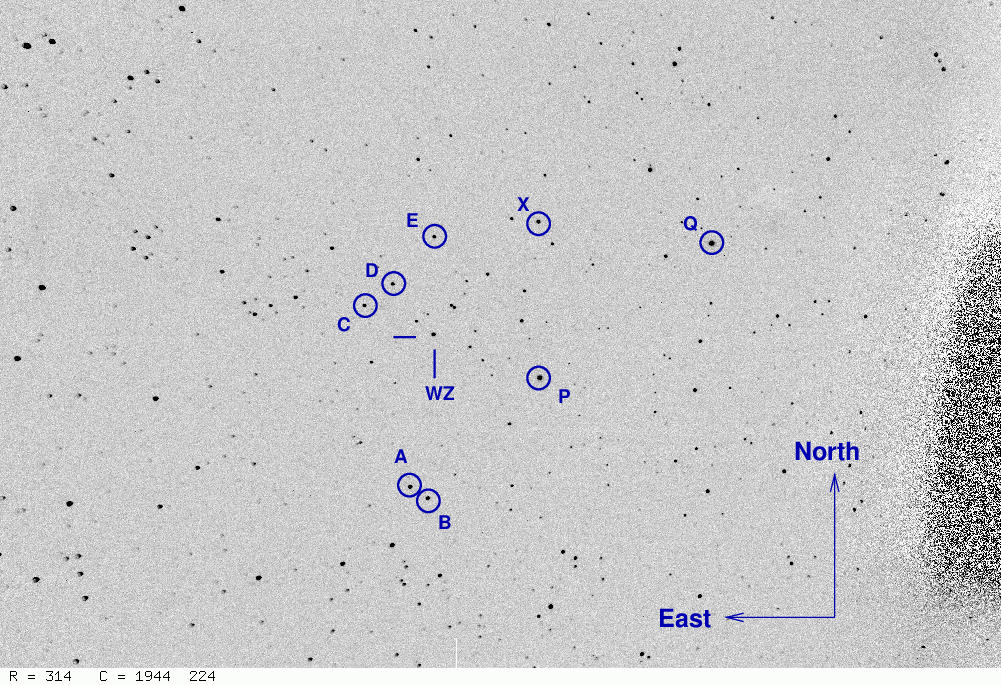
On the night of Sep 19/20, 2021, under good conditions, RIT undergrad Nititee Lertviwatkul and I acquired images of the eclipsing binary system WZ Cyg as part of his capstone project.
There were no problems with the equipment, and we acquired a good 5.5-hour dataset.
The main setup was:
Notes from the night:
The object is located at
RA = 20:53:06.78 Dec = +38 49 40.7 (J2000)
A chart of the field is shown below. The size of the chart is about 31 x 26 arcminutes.

I've marked the location of several comparison stars as well. The bright star P is the ninth-magnitude HD 198975.
I'll use star "A" to shift my instrumental magnitudes to the V-band scale.
I took a photo of the finder TV's screen when pointing to this target; this could be a useful reference for the future:

The sky value shows no clouds at all (the dip is due to a misplacement of dome shutter).

The FWHM graph below shows quite a bit of scatter, due to slight trailing.

Using aperture photometry with a radius of 7 pixels in B and V filters (binned 2x2, each pixel is 1.24 arcsec, so a radius of 8.7 arcsec), I measured the instrumental magnitudes of a number of reference stars and the target. Following the procedures outlined by Kent Honeycutt's article on inhomogeneous ensemble photometry, I used all stars available in each image to define a reference frame, and measured each star against this frame.
Sigma-vs-mag plots show that the floor was about 0.012 mag after I removed images with large outliers.

The change in zeropoint was driven by airmass.

Last modified 9/20/2021 by MWR.